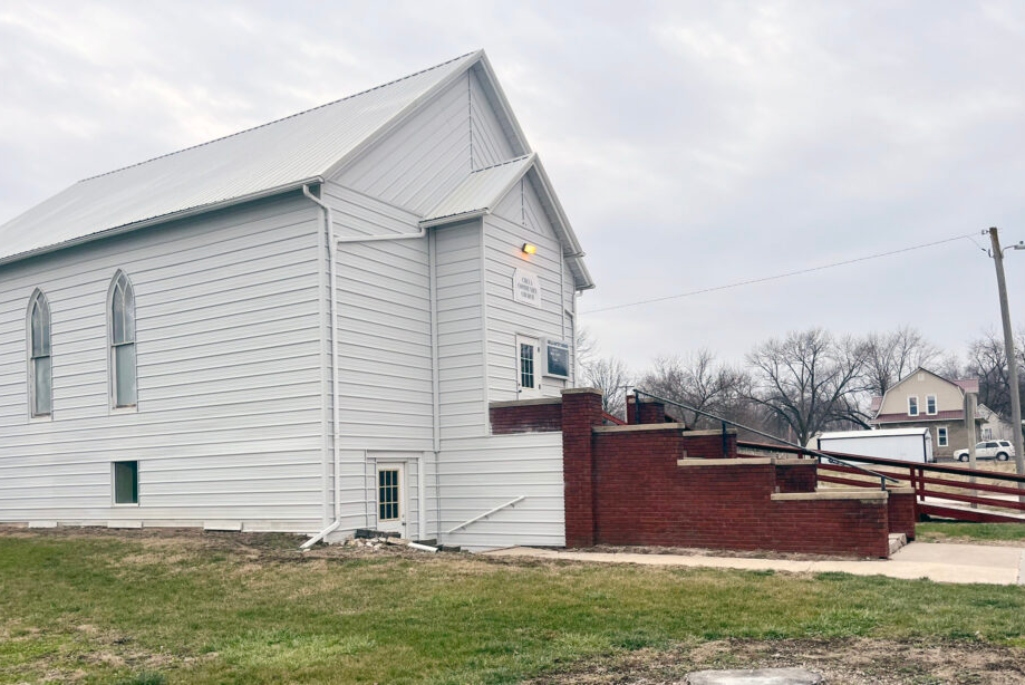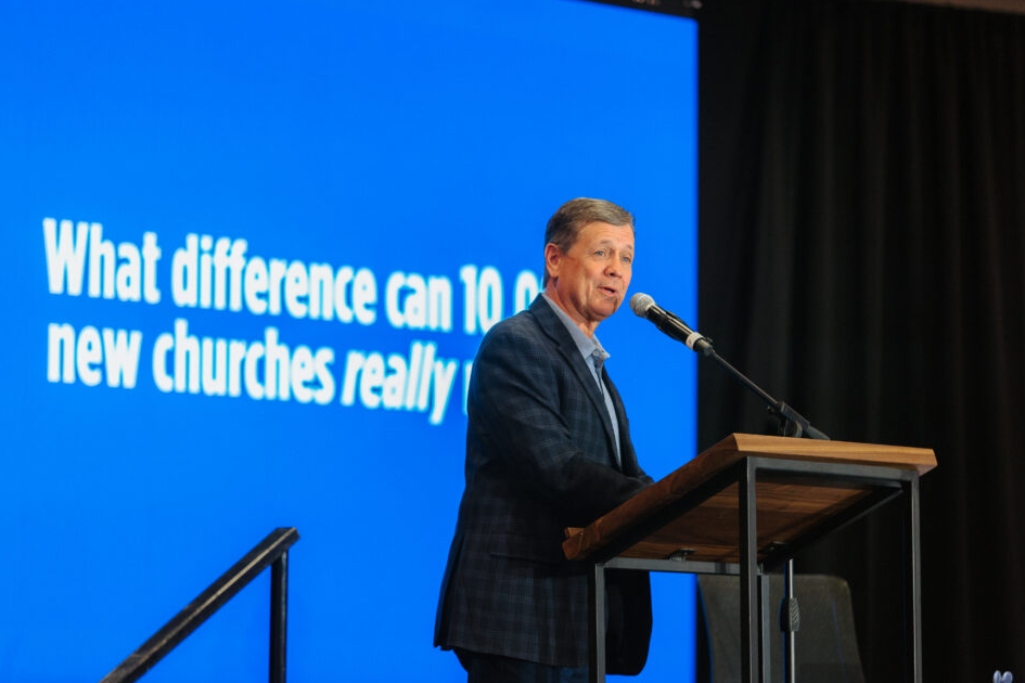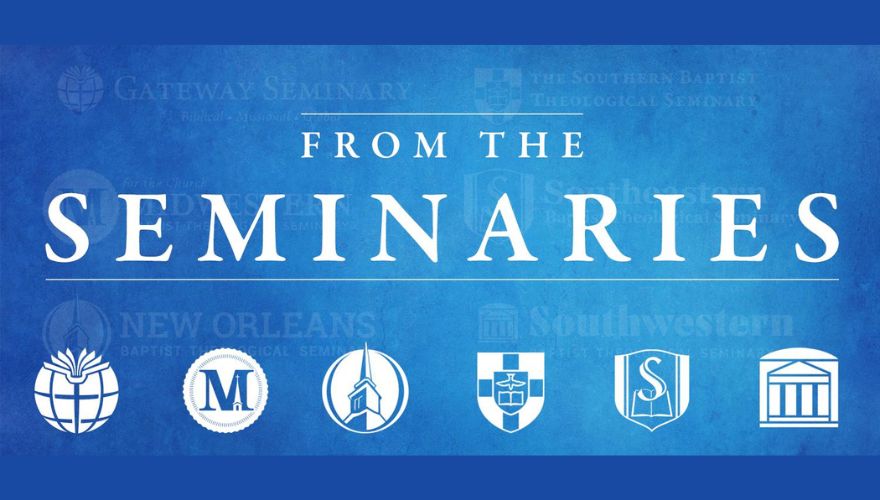
When Chula Baptist Church in Chula, Missouri disbanded as a congregation, they donated the building (pictured here) to the Linn-Livingston Baptist Association. When Calvary Baptist Church in nearby Chillicothe sought to replant the Chula church, they cleaned out the church building only to find that it had become home to a hive of honeybees. Still, they worked hard to get the building back in shape, and now 20-25 people meet to worship in the rural town of 200 people.
CHULA, Mo. (BP) – Amanda Hicks knew there were bees inside the building that once housed Chula Baptist Church. Everyone in the small Missouri town knew that. The old church had been sitting empty for nearly five years, the last of four churches that once served the small community of Chula, Missouri. While it sat empty, bees had made a home inside it, but everyone thought the bees were hiding in the walls.
However, last July, as Hicks, her husband, and a friend ventured into the old church to clean and prepare it for future worshippers, she encountered a surprise. “I was in here, wiping down pews when I heard this ‘whoosh,’” Hicks said. “I opened a door, and a huge swarm of bees came toward the back of my head.” That day, Hicks and her husband got stung multiple times, but they also discovered more than 77 pounds of honey hidden in the church.
Hicks spent several days cleaning the old church building, preparing it for its relaunch in the community. As a recovering substance abuser, she understood God gives second chances. He was giving her a second chance, and she was confident he could do the same for the old building.
Each year, hundreds of churches are forced to close their doors, and Southern Baptists are eager to come alongside congregations at risk to help them find vitality again. A replant now underway in Chula provides an excellent example of how one, average-sized church can enter the work of serving dying churches so that the gospel can again be proclaimed in communities throughout North America.
Residents of Chula have worked alongside members of Calvary Baptist Church from nearby Chillicothe to get the old church building ready for visitors and relaunch it into the community. Nearly five months after reopening the doors, 20 to 25 people now regularly worship at the church.
Calvary’s work in Chula began in 2018, before the doors of Chula Baptist had closed. Jon Davis, Calvary’s pastor, wanted to help the old church re-engage with its community. When the church closed, Calvary continued loving Chula, building a particularly strong relationship with the local school. They provided volunteers for school events and packed and distributed goodie bags to the children. Chris Powell, Calvary’s youth minister, even became a regular tutor for students needing extra help.
“We saw our role as a church as partnering with the school in education,” Powell said. “Our approach is to ask, ‘What can we do to help you?’ Recognizing that schools are where the majority of the community gathers, we wanted to be present and supportive there.”
Three years ago, Calvary started hosting Thursday night meals and Bible study classes at the school. Volunteers conducted Vacation Bible School at Calvary one week in the summer, then took the same materials and taught it in Chula. Some weeks it didn’t seem like Calvary’s hard work was paying off, but the volunteers remained faithful. In the fall of 2022, Calvary started a worship service in the school. Then, last September, they were able to open the old Chula Baptist Church building.
“I believe that our spiritual growth and our identity as followers of Christ are at their best when we give selflessly, expecting nothing in return,” said Davis, who has served as Calvary’s senior pastor since 2016. “If our ministry and church activities are modeled on this principle of selfless giving, I am convinced that God will bless us.”
The Linn-Livingston Baptist Association has also chipped in to help. Not only did they provide the building, but they’ve also paid the insurance on it and provided sermon preparation training for the lay pastors who have preached at the Chula mission most weeks. Keith Corrick, the associational missions strategist, believes there are several other rural communities within the association where a similar approach may be effective.
“This is a very good model of how to do it the right way, the healthy way,” Corrick said. “You need to understand your context, and they do. They are a part of the community, and the community is a part of them. A lot of the functions they’ve had have been enthusiastically supportive. It’s crucial to do it the way they’ve done it.”
Hicks, who grew up near Chula, only went to church for holidays. From time to time, she’d think about God and want Him in her life. But when her daughter passed away before turning 7 months old, she cut herself off from God and plunged headfirst into drugs and alcohol, eventually ending up in jail. Desperate behind bars, Hicks prayed that God would help her reunite with her husband and children.
Eventually, God brought her family back together, and they bought a house in Chula. Hicks started attending services when Calvary began worshiping in the school. When it was time to clean out the old Chula Baptist Church, she was eager to get started.
“I love that we have a community that can work together to make this building look better,” Hicks said. “That’s true of this building, but it’s also true of us. If you try to get better by yourself, you’re not going to get far. You need community, and it has to be a healthy community. I don’t want to let this go.”
Mark Clifton, NAMB’s senior director of replanting and rural ministry, believes Calvary’s ministry in Chula can be a reproducible model for churches that want to engage nearby rural communities. Calvary, which averages about 120 attendees per Sunday, rotates lay preachers and music leaders through the church.
“It’s such an amazing way for churches to reproduce themselves,” Clifton said. “Sometimes the hardest place to do that kind of ministry is in your own backyard, but we have a lot of these dead churches. There are people in those communities who need to hear the Good News. The way that Calvary has done this is easily reproducible for any county seat church anywhere in North America.”


